A thriving “Tern Town” in Hayward
By Ilana DeBare
If you’ve been involved with Golden Gate Bird Alliance, you’ve probably heard a lot about the nesting colony of California Least Terns at Alameda Point. Our Friends of the Alameda Wildlife Reserve committee has worked on behalf of these tiny, endangered birds for thirty years – pressing for permanent protection of their nest site, helping the U.S. Fish & Wildlife Service prepare the site for the terns’ arrival each spring, monitoring for predators, and educating the public.
Today’s blog post is about another East Bay colony of Least Terns – the one at Hayward Regional Shoreline.
Least Terns – the smallest member of the tern family, at just 8-9 inches and slightly over one ounce – were designated by the federal government as endangered in 1970, due to loss of habitat, disturbance of nest sites, and predation by other species of birds and mammals.
In 2001, the East Bay Regional Park District launched an effort to encourage Least Tern nesting on a 0.6-acre island in the shallow, brackish waters of Hayward Regional Shoreline.
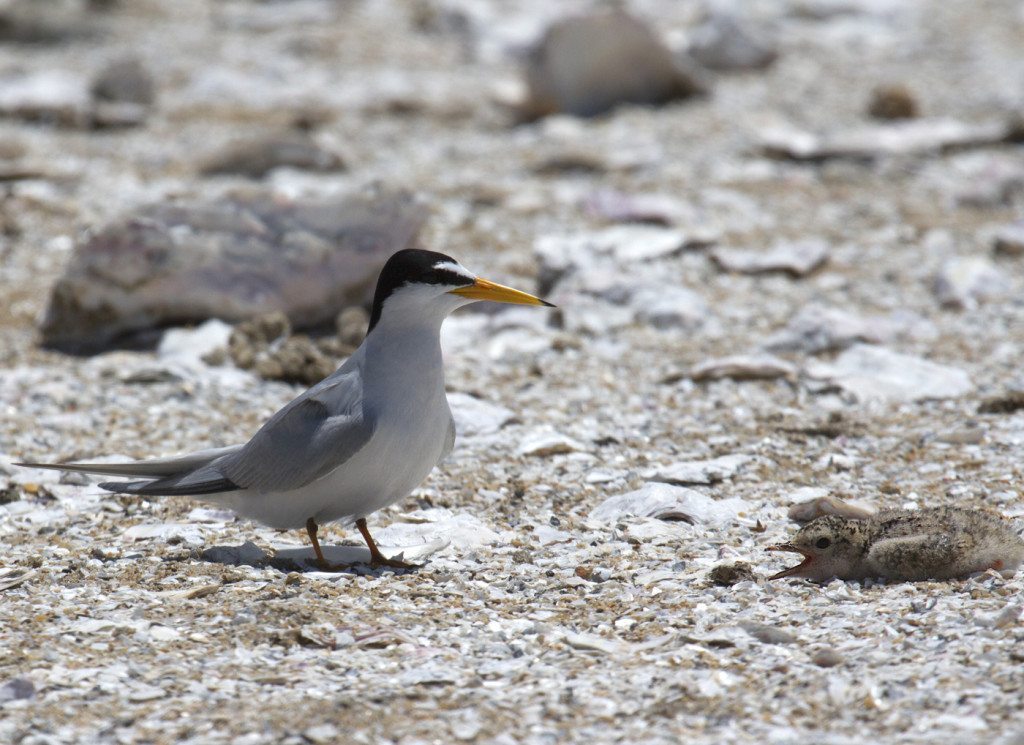
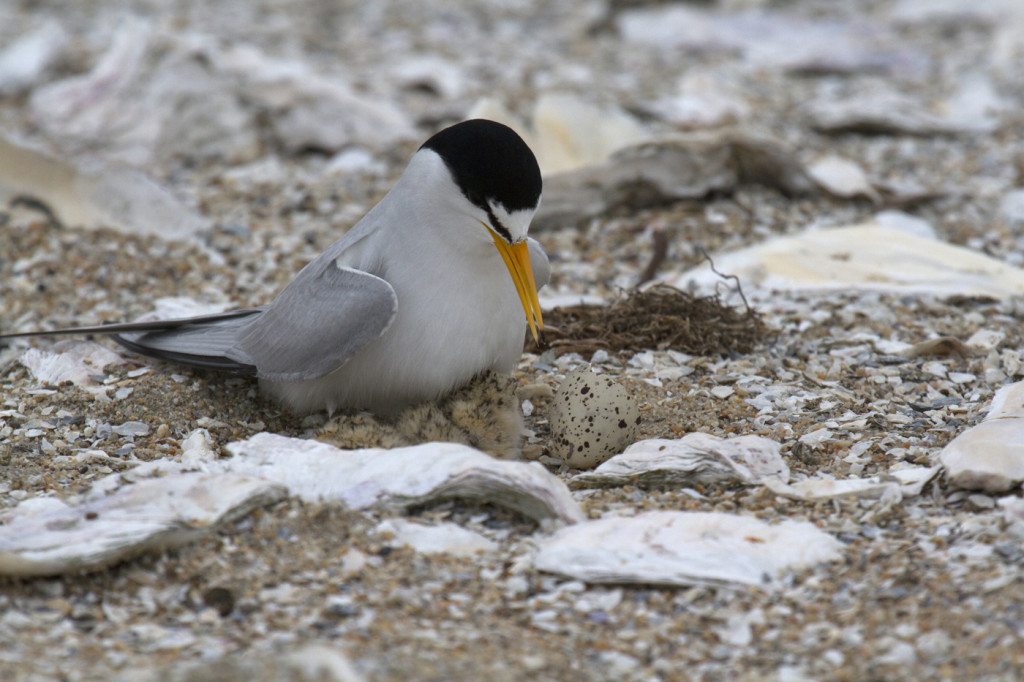
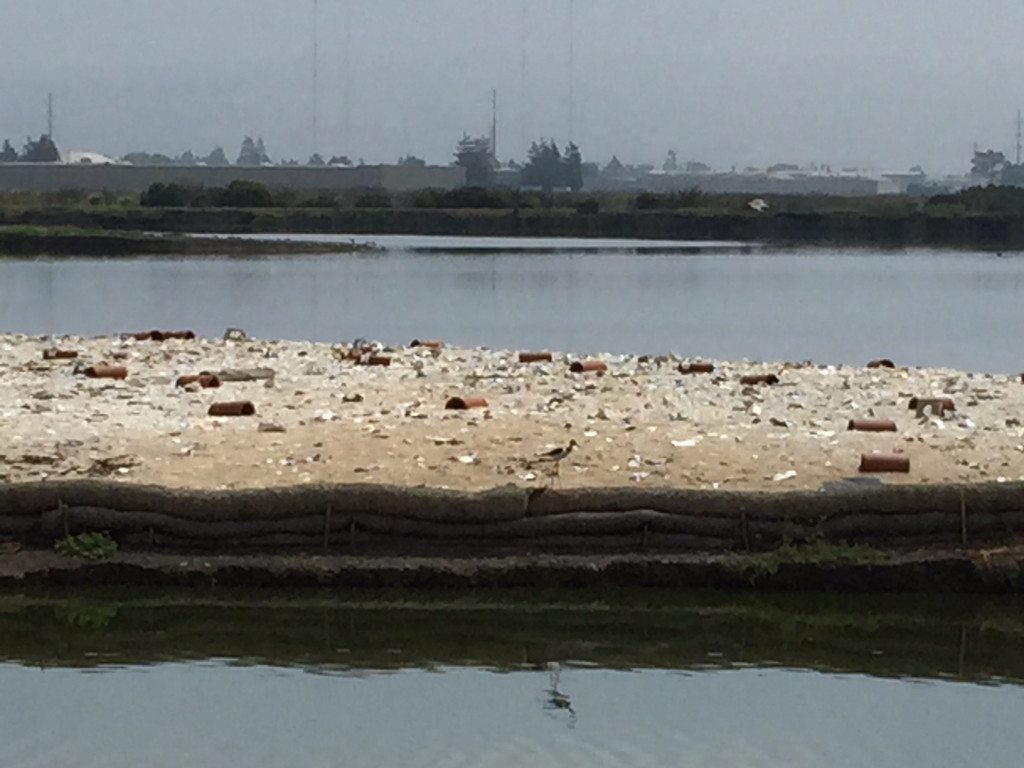
Over four years, 1,600 volunteers put in 20,000 hours creating the tern equivalent of a honeymoon resort, now known as Tern Town. First they had to remove all the non-native weeds covering the man-made island, since Least Terns look for flat, sandy nest sites where they can easily see their chicks and potential predators. The Park District added a layer of landscape fabric to limit weed growth, and on top of that placed 180 tons of sand, oyster shells, and rock salt.
The District installed little wood and ceramic shelters for the chicks, similar to what Golden Gate Bird Alliance volunteers install at the Alameda site each year. They also placed hand-painted Least Tern decoys on the island to signal, “Come on over! This is tern heaven!” And starting in 2005, they reinforced that message with a stereo system that continually plays tern courtship calls through the first half of nesting season.
The result? The densest concentration of Least Tern nests on the West Coast. The Alameda site remains larger – but Hayward has more successful nests per acre.
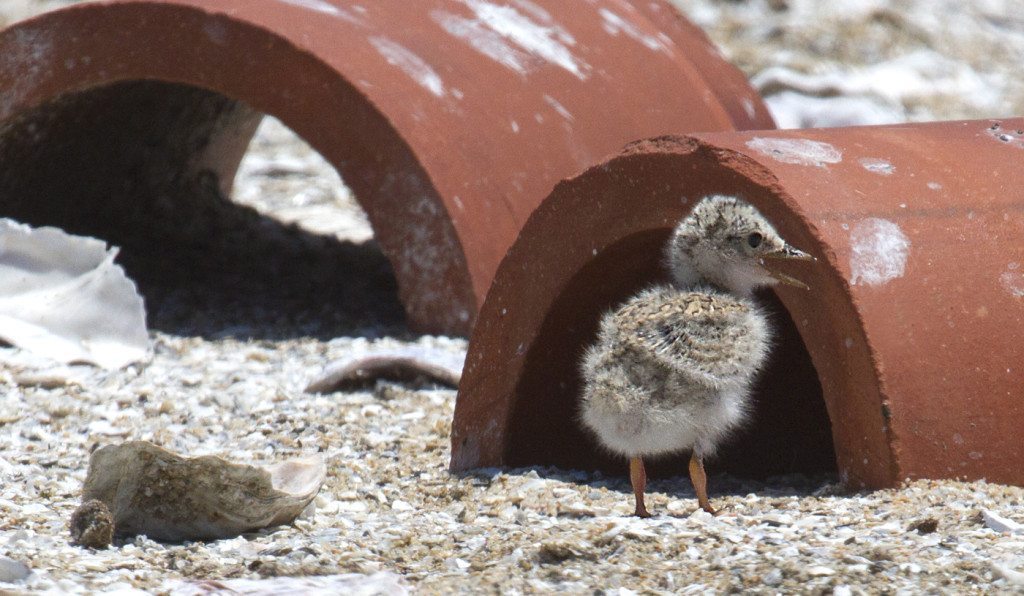
“We have up to 80 or 90 pairs on an island the size of an acre,” said David “Doc Quack” Riensche, the East Bay Regional Park District biologist overseeing the tern island. “And we’re seeing a lot more success than in southern California. In southern California, it takes five pairs to produce one (surviving) fledgling, but here we get one fledgling for every pair.”
On a balmy Thursday earlier this month, Riensche took us behind the locked gates that protect the area around the colony from human disruption. We drove out along levees near the San Mateo Bridge, past swallows cruising for bugs and orange-hued avocets guarding their chicks.
The island was an amazing place. With only 35 meters of water between us and the island, we were able to get good views through our binoculars. (Although the scope was of course better!) The chicks and adults dotted the island almost as densely as an exhibit of prairie dogs in a zoo. The air rang with a clamor of both live and recorded tern calls.
Black-necked Stilts strolled the edge of island like leggy supermodels. Unlike other sites where Least Terns tend to nest alone, the Hayward island also hosts nesting stilts, avocets and a couple of Gadwalls and Northern Pintails without any significant conflict.
Before the terns arrive from South America each April, the island is also home to nesting Western Snowy Plovers, a California Species of Special Concern.
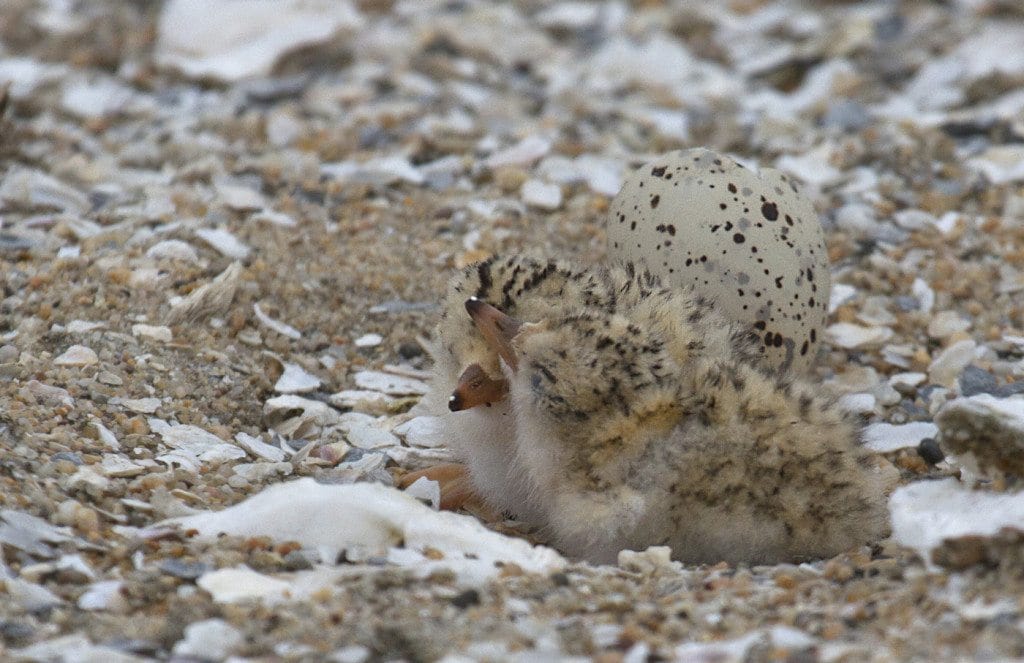
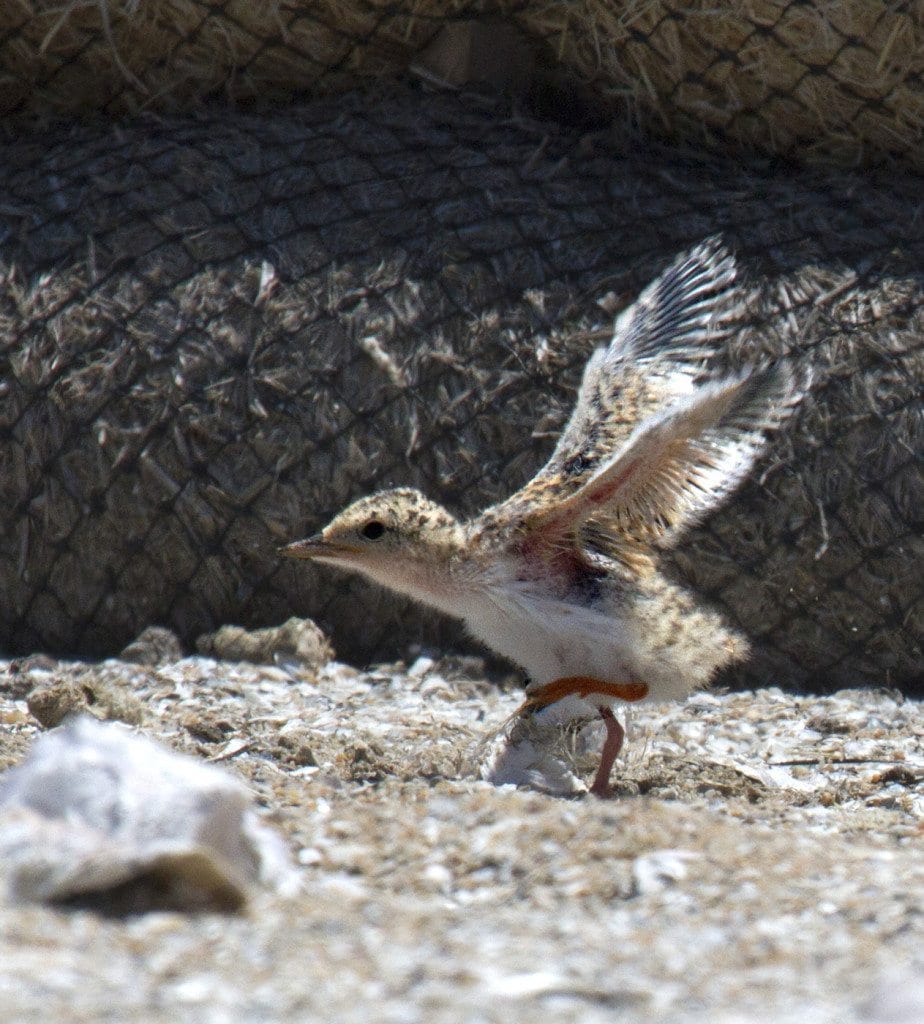
Tern Town still faces its share of challenges. Weeds and erosion require continuing maintenance. Predation remains a big risk. In 2005, the first year that terns arrived, almost all the eggs and young were eaten by California Gulls. So Riensche and his tern team have come up with a program to scare off protectial predators.
Volunteers monitor the colony daily. If a gull approaches the colony, they use an air horn to play a recording of gulls in distress – “gull spooky sounds,” as Riensche calls it. They also use firecrackers to scare them away, and have installed a cautionary decoy of a dead gull on the far side of the island. They place raccoon traps on the levee across from the island.
“Since we instituted predator management, usually 90 or 95 percent of the nests hatch,” Riensche said. “If our volunteers weren’t here, we could be looking at 70 percent or more failing.”
Although the Hayward colony is ten miles south of the Alameda colony, the two sites work together as a kind of avian insurance policy against predation. In 2012, the Alameda colony had a disastrous breeding season but Hayward boomed – with 212 nests, double the usual number.
Riensche speculates that some of the Alameda terns may have moved south to Hayward in mid-season for a second try at nesting in a less dangerous spot.
“The two colonies are linked,” he said. “We need to manage both of them. If one gets banged by predators, the other is there as backup.”
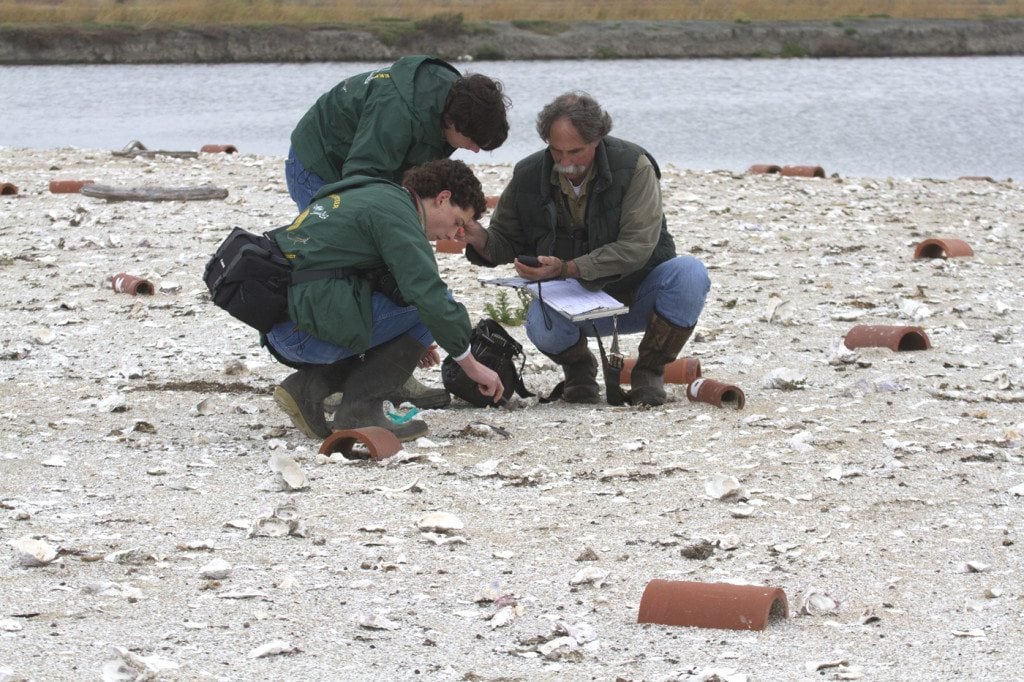
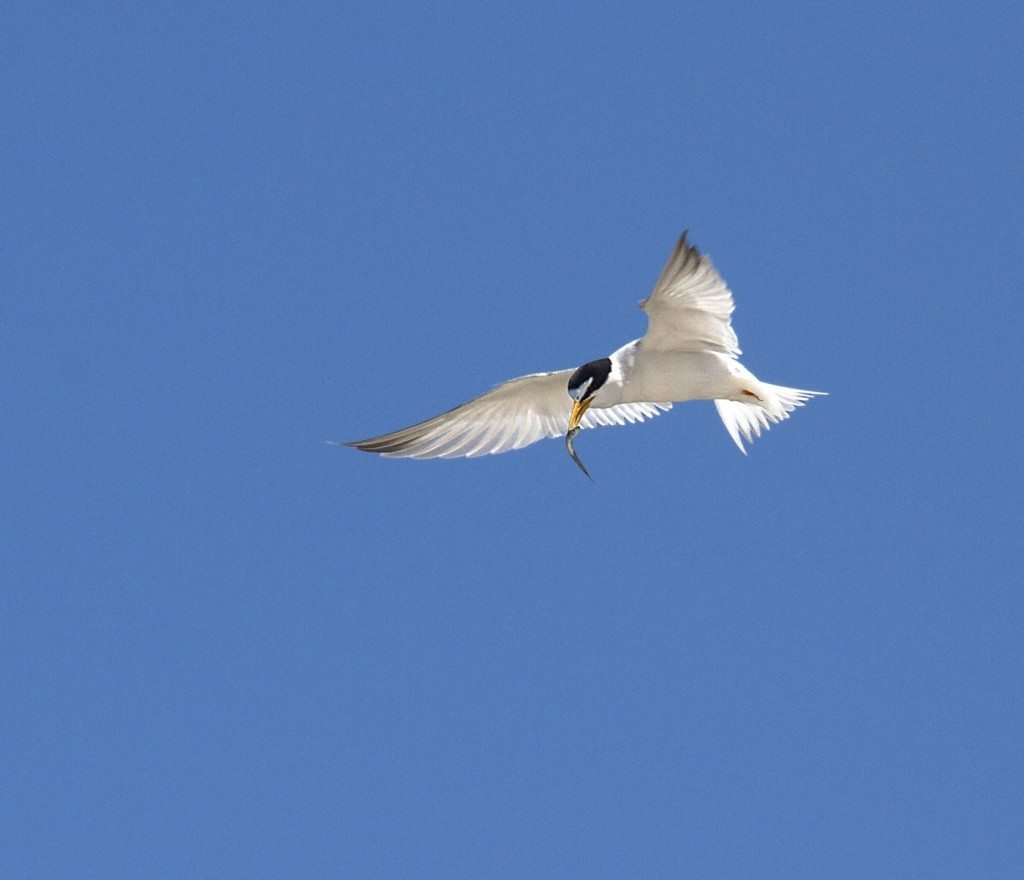
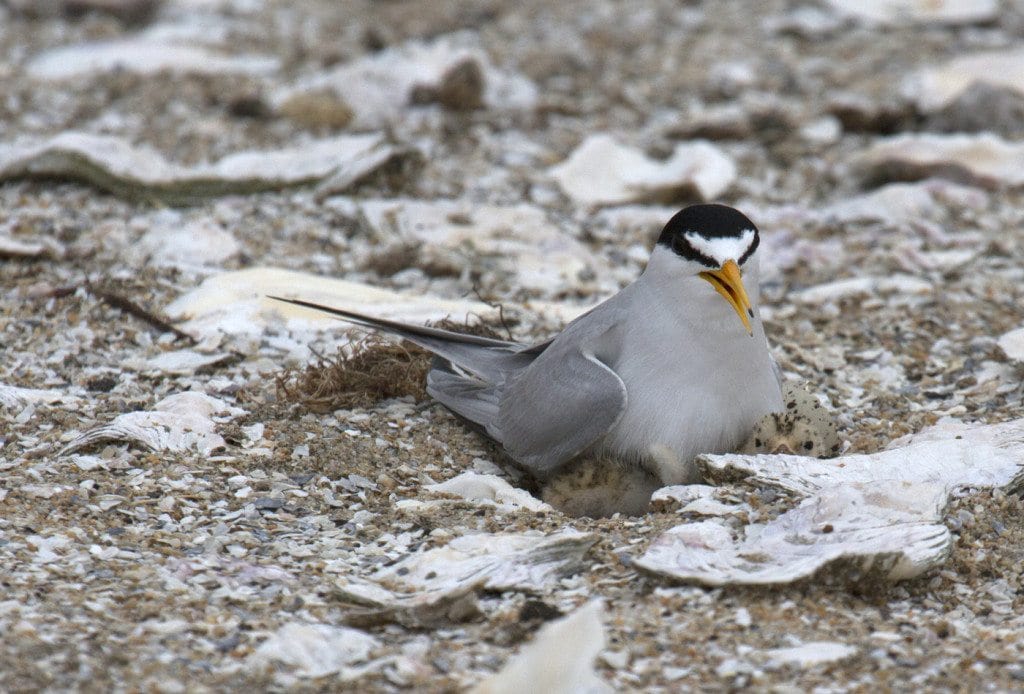
Riensche has a wish list for the future of Tern Town: He’d like to start a program to band chicks, to learn exactly where they winter and how many return to Hayward to breed. He’d like to rip-rap the island to limit erosion, and dredge the channel around it to prevent raccoons and foxes from accessing it. The challenge – no surprise here – will be coming up with funds for these projects.
In the meantime, 2015 is shaping up to be a good year for Tern Town. There were about 75 pairs last week, almost halfway through the nesting season, which runs from late April until early August. Hayward typically sees two waves of nesting, with the second one half as productive as the first. So if the current trend continues, we could end 2015 with more than 100 chicks – well over Hayward’s norm.
That’s good news for Least Terns – and those of us who love them. GGBA showed some of that love recently, when we donated $500 of the funds raised during our 2015 Birdathon to the East Bay Regional Park District to support its Least Tern and Snowy Plover conservation programs.
—————————————-
Want to help California Least Tern populations thrive in the East Bay? For the Alameda colony, volunteer with our Friends of the Alameda Wildlife Reserve committee. Or for Hayward, volunteer with Doc Quack’s Wildlife Volunteers. This coming Saturday June 20 is the annual Return of the Terns bus tour in Alameda. The bus tours to view the tern nesting areas are currently sold out, but you can still come by for slide presentations and viewing terns over the Bay with binoculars. (And maybe get on a bus if there are cancellations.) For details, see the Return of the Terns flyer.
